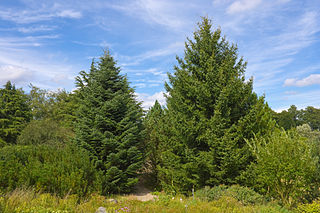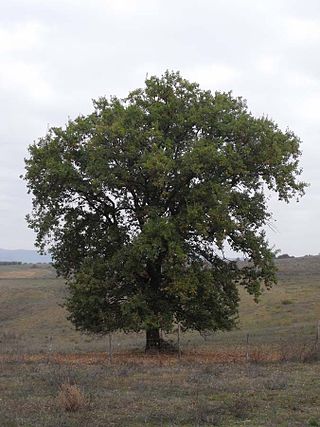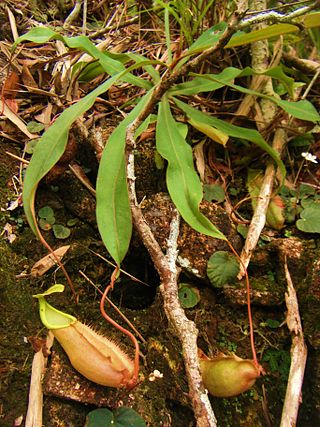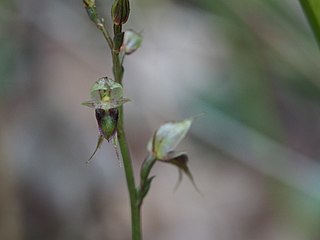
Viburnum lentago, the nannyberry, sheepberry, or sweet viburnum, is a species of Viburnum native to North America.

Grand Cayman is the largest of the three Cayman Islands and the location of the territory's capital, George Town. In relation to the other two Cayman Islands, it is approximately 75 miles (121 km) southwest of Little Cayman and 90 miles (145 km) southwest of Cayman Brac.

Araucaria heterophylla is a species of conifer. As its vernacular name Norfolk Island pine implies, the tree is endemic to Norfolk Island, an external territory of Australia located in the Pacific Ocean between New Zealand and New Caledonia. It is not a true pine, which belong to the genus Pinus in the family Pinaceae, but instead is a member of the genus Araucaria, in the family Araucariaceae, which also contains the hoop pine. Members of Araucaria occur across the South Pacific, especially concentrated in New Caledonia where 13 closely related and similar-appearing species are found. It is sometimes called a star pine, Polynesian pine, triangle tree or living Christmas tree, due to its symmetrical shape as a sapling.

Pinus latteri, or Tenasserim pine, is a pine native to Mainland Southeast Asia.

Abies cephalonica or Greek fir is a fir native to the mountains of Greece, primarily in the Peloponnesos and the island of Kefallonia, intergrading with the closely related Bulgarian fir further north in the Pindus mountains of northern Greece. It is a medium-size evergreen coniferous tree growing to 25–35 metres (82–115 ft) – rarely 40 m (130 ft) – tall and with a trunk diameter of up to 1 m. It occurs at altitudes of 900–1,700 m (3,000–5,600 ft), on mountains with a rainfall of over 1,000 millimetres (39 in).

Quercus pubescens, commonly known as the downy oak, pubescent oak or Italian oak, is a species of white oak native to southern Europe and southwest Asia. It is found from northern Spain (Pyrenees) and France in the West to Turkey and the Caucasus in the East.

The blue iguana, also known as the Grand Cayman ground iguana, Grand Cayman blue iguana or Cayman Island rock iguana, is an endangered species of lizard which is endemic to the island of Grand Cayman. It was previously considered to be a subspecies of the Cuban iguana, Cyclura nubila, but in a 2004 article Frederic J. Burton reclassified it as a separate species because according to him the genetic differences discovered four years earlier between the different C. nubila populations warranted this interpretation. The blue iguana is one of the longest-living species of lizard.

Nepenthes jacquelineae is a tropical pitcher plant endemic to the Indonesian island of Sumatra. Due to its unique pitcher morphology, it is considered to be one of the most spectacular Nepenthes species native to the island.

Nepenthes rigidifolia is a critically endangered tropical pitcher plant endemic to Sumatra, where it grows at elevations of 1000–1600 m above sea level.

Selenicereus hamatus is a species of Cactaceae and produces one of the largest flowers in the family. It is a cultivated ornamental vine. The species is native to Mexico.

The Cuban rock iguana, also known as the Cuban ground iguana or Cuban iguana, is a species of lizard of the iguana family. It is the second largest of the West Indian rock iguanas, one of the most endangered groups of lizards. A herbivorous species with a thick tail and spiked jowls, it is one of the largest lizards in the Caribbean.

Cyclura nubila caymanensis, the Lesser Caymans iguana, Cayman Brac iguana, Cayman Island brown iguana or Sister Isles iguana, is a critically endangered subspecies of the Cuban iguana. It is native to two islands to the south of Cuba: Cayman Brac and Little Cayman, which are also known as the Sister Isles due to their similar shapes and close proximity to each other. The population of this subspecies has been impacted by habitat encroachment by human development and is likely being destroyed due to predation by cats, the population on Cayman Brac has remained particularly small for decades.
Verticordia bifimbriata is a flowering plant in the myrtle family, Myrtaceae and is endemic to the south-west of Western Australia. It is an open shrub with small leaves and spikes of pink flowers.

Salvia caymanensis, the Cayman sage, is a short-lived perennial plant in the genus Salvia that is endemic to Grand Cayman in the Cayman Islands. It was thought to be extinct for nearly 40 years until it was rediscovered in 2007. After the damage caused by Hurricane Ivan in 2004, conservationists thought that conditions might be ideal for the reappearance of Salvia caymanensis if there was still viable seeds in the wild. A wanted poster, offering a 1000 CI$ reward, led to the discovery of the first plants seen since 1967.

Selenicereus grandiflorus is a cactus species originating from the Antilles, Mexico and Central America. The species is commonly referred to as queen of the night, night-blooming cereus, large-flowered cactus, sweet-scented cactus or vanilla cactus. The true species is extremely rare in cultivation. Most of the plants under this name belong to other species or hybrids. It is often confused with the genus Epiphyllum.

Nepenthes kerrii is a tropical pitcher plant native to Tarutao National Marine Park in southern Thailand, where it grows at elevations of 400–500 m above sea level. The 2018 IUCN assessment also considers the taxon found on Langkawi Island of Malaysia (~10 km south of Tarutao) to be conspecific. However, there seems an attempt to recognize the Langkawi plants (N. sp. Langakawi) as a new species. This species is thought to be most closely related to N. kongkandana.

Nepenthes andamana is a tropical pitcher plant endemic to Phang Nga Province, Thailand, where it grows near sea level in coastal savannah and grassland. It is thought to be most closely related to N. suratensis.

Nepenthes chang is a tropical pitcher plant endemic to the Banthad Mountains of central Thailand, where it grows at elevations of 300–600 m above sea level. It is thought to be most closely related to N. kampotiana.

Acianthus exiguus, commonly known as tiny mosquito orchid, is a flowering plant in the orchid family Orchidaceae and is endemic to New South Wales in Australia. It is a terrestrial herb with a single, heart-shaped leaf and up to five translucent greenish-white flowers with pinkish markings and is found growing in forests on the north coast of the state.

Dudleya candida is a species of perennial succulent plant in the family Crassulaceae known by the common names Coronados liveforever or chalk rose. It is a rosette-forming, green to white-colored leaf succulent, and in bloom yellow flowers atop red stalks stand above the foliage. It has some visual similarities to the mainland Dudleya brittonii, and has found uses in horticulture as an ornamental plant. It is restricted to the Coronado Islands, an island group off of the extreme northern Baja California coast, visible from the United States.


















